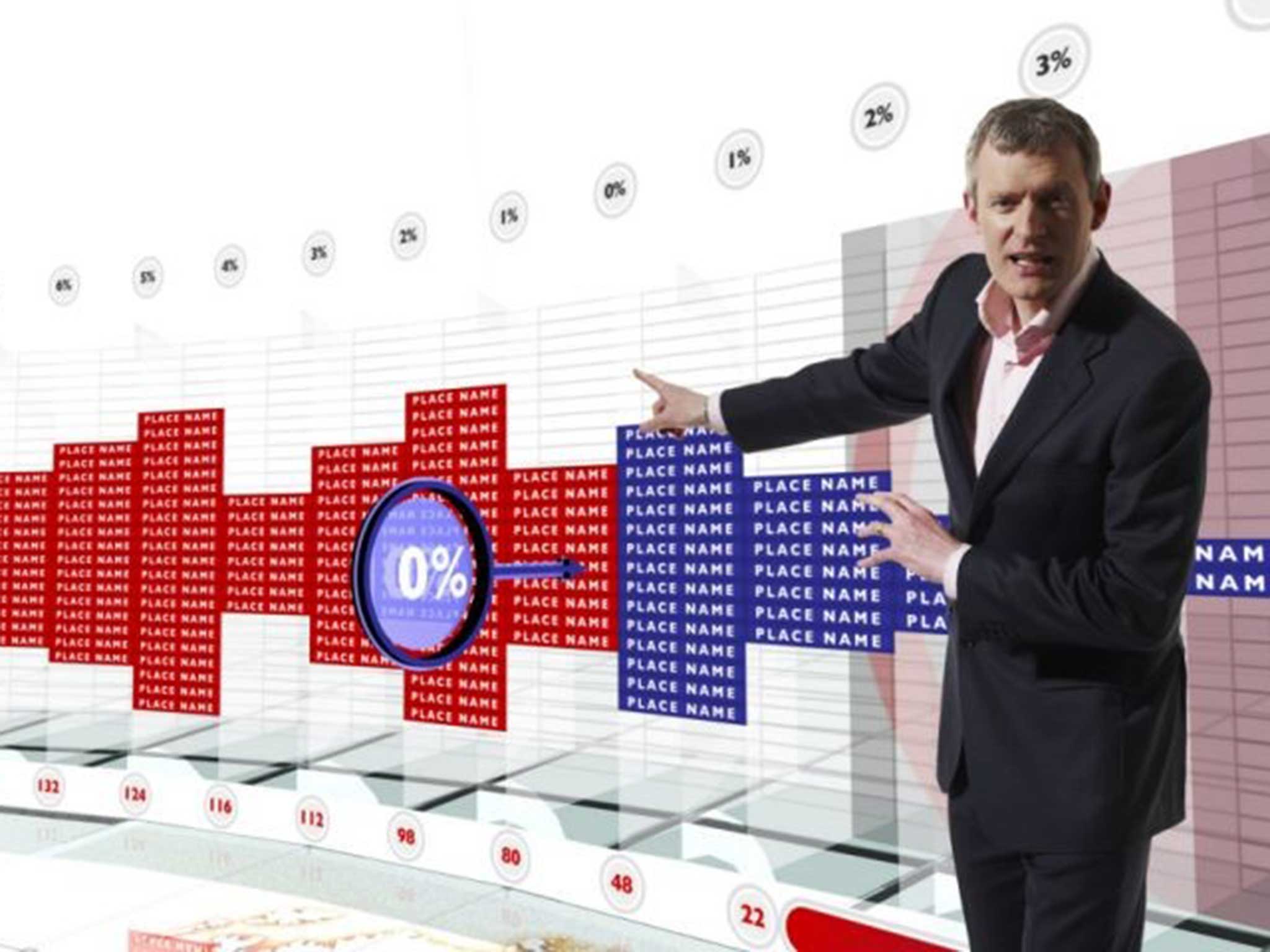General Election 2015: BBC reveals new swingometer as Britain enters age of multiparty politics
But Jeremy Vine revealed to The Independent that the broadcaster has developed a new four-faced device, modelled on Big Ben

Delighting psephologists and baffling many others in equal measures, the BBC’s swingometer looked as if it had an uncertain future in the Britain of multiparty politics.
But Jeremy Vine revealed to The Independent that the broadcaster has developed a new four-faced device, modelled on Big Ben.
The BBC’s election analyst said that the updated version followed much “stressing” about its future. The first face will show the traditional swing between the Conservatives and Labour, while the other three will outline the transfer between Tories and Lib Dems, Labour and the Lib Dems and Labour and the SNP.
Vine described the new system as a “measure of relative performance”. “It’s now a situation where if you see the Con/Lab swingometer, it will tell you that Labour have gone up 4 per cent and the Conservatives have gone down 6 per cent,” he explained.
“But that doesn’t mean that 4 per cent of the Conservative vote went to Labour. It might have gone to Ukip.”
A favourite fixture of the BBC’s election night coverage, the swingometer was invented by the political scientist David Butler and first used in 1955. In that general election, the Conservatives and Labour shared over 97 per cent of the popular vote. The device has since proved effective for showing the transfer of votes between the two parties. But with seven contenders this time round, the pendulum has been deemed insufficient to keep up with the action.
The challenge was even trickier in Scotland because of the swing expected from Labour to the SNP. “We’ve had to build a new swingometer with more numbers on it,” he said. “Normally, you need to get up to maybe 10 per cent max. Even in 1997, Blair’s swing was 9, 10 per cent. But with Scotland, we’ve had to build one to allow for a potential 30 per cent swing.”
The Independent has got together with May2015.com to produce a poll of polls that produces the most up-to-date data in as close to real time as is possible.
Click the buttons below to explore how the main parties' fortunes have changed:
All data, polls and graphics are courtesy of May2015.com. Click through for daily analysis, in-depth features and all the data you need. (All historical data used is provided by UK Polling Report)
Subscribe to Independent Premium to bookmark this article
Want to bookmark your favourite articles and stories to read or reference later? Start your Independent Premium subscription today.

Join our commenting forum
Join thought-provoking conversations, follow other Independent readers and see their replies